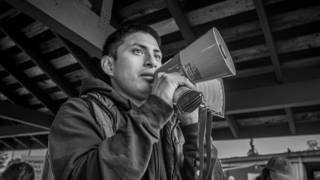The United Nations has declared a state of famine in drought-stricken areas of southern Somalia amidst one of the worst humanitarian crises of the past half-century. Nearly half of Somalia’s population — 3.7 million people — are said to be in a state of “crisis”, the vast majority in the south. The U.N.’s humanitarian coordinator for Somalia, Mark Bowden, said the crisis will likely get worse.
Mark Bowden: “I can confirm that this assessment highlights the shocking severity of the crisis facing millions of people in Somalia at the moment. More specifically, the analysis that has been undertaken confirms that a state of famine exists in parts of Bakool and Lower Shabelle regions of southern Somalia. The rest of southern Somalia is close to famine conditions, and it is likely the conditions will deteriorate further in the next month.”
The United Nations says acute malnutrition has reached 30 percent in Bakool and Lower Shabelle, with some areas seeing malnutrition rates of 50 percent for children under five. At least 500,000 children are at risk of death in the Horn of Africa, which has been devastated by high food prices, violence, and the driest conditions in decades. David Kaatrud of the World Food Programme said aid groups are struggling to reach those in need now that the militant group al-Shabab has lifted a ban on foreign organizations.
David Kaatrud: “We’re facing an alarming humanitarian situation in central and southern Somalia right now, which is an area we’ve had limited access since last year. Amongst the effects of this are refugees streaming across the border from the effects of drought, high food prices and violence, and moving into the camps in Ethiopia and Kenya. And amongst this group, we find a high level of malnutrition. Rates of acute malnutrition among children are something to one in two in the camps in Ethiopia and one in three in the camps in Kenya.”








